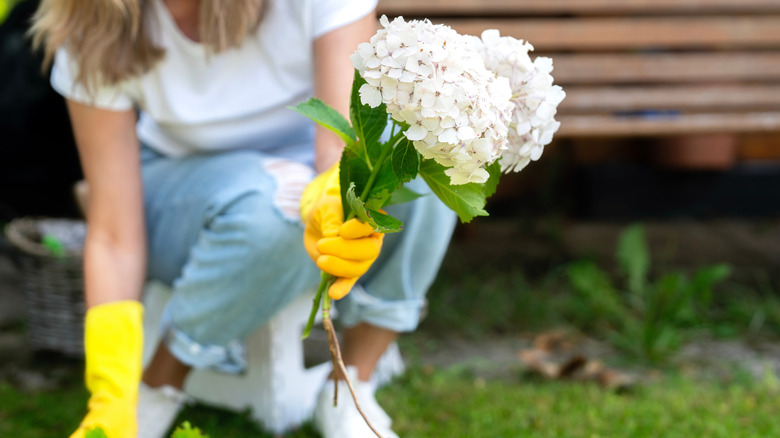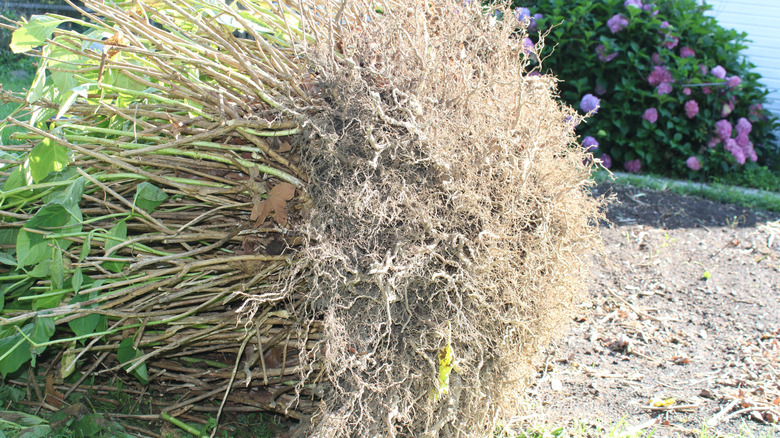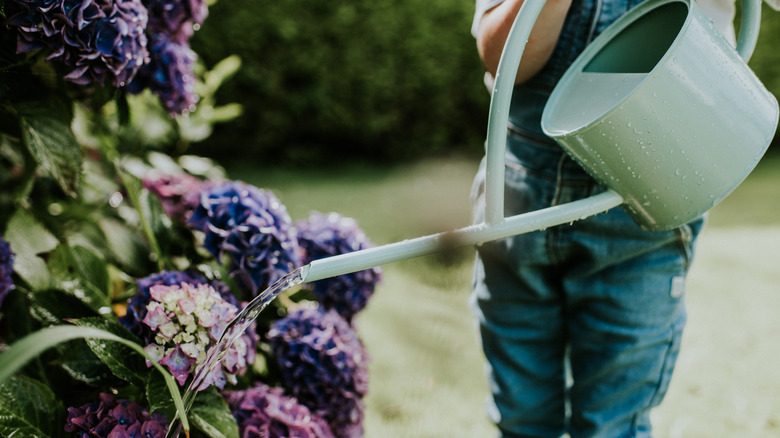What Is Hydrangea Transplant Shock? (& The Best Way To Avoid It)
Everyone knows moving is hard. Believe it or not, hydrangeas feel the same way. There may come a time when you need to relocate these beautiful blooms — for purely aesthetic reasons, or perhaps they're not thriving in their current spot. When undergoing these moves, hydrangeas can get stressed out, resulting in what is known as transplant shock. The good news is that following some simple and easy guidelines can help them avoid this stress and flourish in their new home.
Transplant shock is a common hydrangea issue to know about before growing them in your garden. It happens when a plant's roots aren't able to properly absorb nutrients — either because they were disturbed during a move or because they're having trouble acclimating to their new environment. When this occurs, it can cause the plant's leaves to wilt or droop. It could also lead to fewer or no blooms, or in severe cases may cause the plant to die. You can prevent your plants from meeting this unfortunate fate by moving them at the right time of year, taking precautions when relocating them, and giving them some TLC once they've been moved to their new home.
Avoid disturbing roots when moving hydrangeas
One crucial way to avoid transplant shock is to move your hydrangeas at the right time of year – when they're in their dormant phase, as opposed to actively growing. Determining when this phase is depends on the climate in which you live. To determine this, it's helpful to know what USDA growing zone you are in. As a rule, the height of summer, when plants are in their active growing phase, should be avoided. Typically, fall and spring work well, though you need to time it right. In the fall, you should wait until the blooms have died off, but the first frost is still several weeks out. In the spring, you should delay planting until the frost is no longer an issue, though it will need time to acclimate to its new location before the growing season begins.
It's important to properly prep the plant before making the move. Before you dig it up, thoroughly water around it first. This will soften the surrounding ground and allow it to come up more easily. Hydrating the plant pre-move will also minimize the risk of transplant shock. When digging up the hydrangea, take care not to disturb the roots. Dig around the base until it's loose enough to wiggle free. Once it's out, consider wrapping the rootball in burlap to keep it intact.
Keeping hydrangeas hydrated will help minimize transplant shock
When replanting, you can avoid some of the mistakes everyone makes when planting hydrangeas by picking a location where there is adequate water, sunlight, and soil drainage. Once you've selected your spot, make sure to dig a hole that is big enough for the rootball to comfortably fit. Wet the hole thoroughly before planting. Once the plant is in place, water again so the soil is moist and a little muddy. Backfill the hole, creating a firm rim around the plant. You could also add a layer of mulch around the top.
After the move, it's important to keep the plant hydrated, watering at least once a week for a few months to help the roots take hold — but be careful not to make it too soggy. Watering with a liquid fertilizer, such as kelp or seaweed, could also minimize the risk of shock by helping the roots acclimate. If you suspect your hydrangea may be in shock after a move, don't panic. Continue to water it with liquid fertilizer and remove damaged leaves. Then, give it some time to bounce back on its own.


